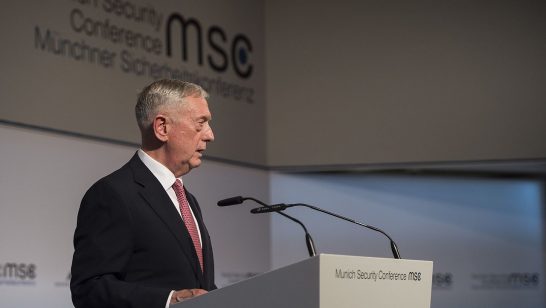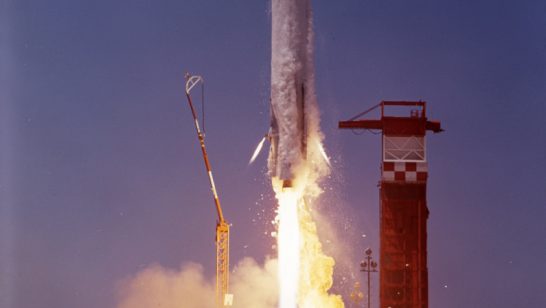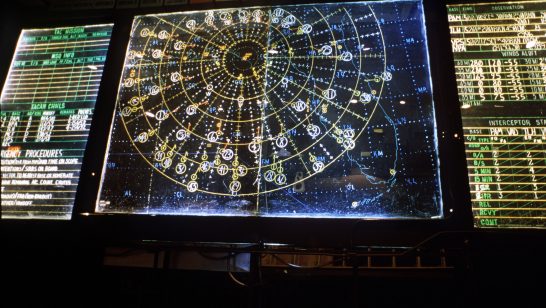
In the period between the US election and the inauguration of Donald Trump, many commentators predicted that arms control might be an area where the leaders of the US and Russia could make quick progress. Some even suggested that Trump might be so eager to pursue a deal with Russia that he could offer Putin some ‘ice-breaking’ gifts, such as a freeze on further progress of the US European Missile Defence program. Yet, instead of a US-Russia honeymoon, tensions have flared up. Not only is the INF Treaty compliance issue back with a vengeance, but President Trump has declared his support for broad US nuclear modernization with his ‘”top of the pack” comment and has deplored New START as a “bad” and “one-sided” deal.
Paradoxically, these troubling developments open space for Europe to insert its own ideas and pursue its own interests in the area of arms control, both nuclear and conventional. If the US and Russia took the lead (as they had done in the past), there would be very little for Europe to do. It could just sit on the sidelines and wait for the results, with some Europeans cheering the bilateral effort and others fearing that the US is making too many concessions to the Russians. In the absence of joint US-Russia leadership on arms control, Europe should use this opportunity to take more responsibility.
This is not just about filling up diplomatic space: some of the current military challenges (that arms control is meant to address) have a direct and negative impact on the security of Europe. For example, the alleged deployment of INF-prohibited cruise missiles in the European part of Russia would mean adding a number of Central and Western European targets – military bases, logistical hubs, decision-making centers – to the prompt strike plans of the Russian military. Also, new Russian and NATO deployments and exercises, and the ‘close encounters’ between Western and Russian ships and aircraft that often accompany them, are taking place in the middle of Europe, including in the Baltic and Black Sea areas. Not to mention that any military potential conflict, no matter how ‘limited’ it may look from the perspective of Moscow or Washington, would surely bring death and destruction to Europe – just look at Eastern Ukraine. Arms control should not be an abstract issue for Europeans.
At the same time, Europe needs to be wise on how it spends its political capital. For example, recent discussion about a “European” nuclear deterrent, while intellectually stimulating, sets us on the wrong path. It rests on two questionable assumptions: firstly, that the U.S. extended nuclear deterrence guarantees to Europe have been de facto invalidated with the arrival of Trump (there’s no evidence of a change of US policy that would justify jumping to such conclusions) and secondly, that this deterrent can be replaced with a “European” solution, built on the basis of the French and British nuclear capabilities. Lots of time can be spent on devising such a European solution, but with little chance of it being accepted by the two European nuclear weapon states, let alone operationalized.
Just as problematic would be an effort to unite Europe around embracing a treaty prohibiting nuclear weapons. Some European states have spearheaded, or at least supported, the effort to start the negotiations on such a treaty, and will be present in New York on March 27 for the first round of talks. Others, however, including almost all NATO members have clearly stated their reservations towards the ban treaty proposal. These are not good conditions for forging a European consensus around nuclear disarmament: the division will likely to be there for years.
What elements of arms control agenda should the European states focus on in 2017?
There is, of course, a list of ‘safe’ topics, including continued support for existing international regimes and agreements in the area of non-proliferation, the Joint Comprehensive Plan of Action with Iran included. While these are popular goals to be pursued further, more needs to be done in two areas directly relevant in the context of the West-Russia crisis.
Firstly, all Europeans have a stake in securing the future of the INF Treaty. The current situation, with US openly accusing Russia of treaty violation (and no European state contradicting it, officially or informally), and Russia rejecting this and counter-accusing the US, represents the worst possible outcome for Europe. The non-compliance charge challenges the rule-based international system that Europe hopes to maintain. The threat of deployment presents a military challenge to European militaries and NATO.
Europe should invest its own political capital in resolving the INF compliance issues. European leaders, especially those planning to visit Moscow in the coming weeks, including British Foreign Secretary Boris Johnson and German Chancellor Angela Merkel, should bring up Russian INF Treaty compliance in their talks as a major security concern for their countries and an obstacle to improving relations with Russia. European states can also be explicit, when talking to Russia, that they will support a tougher US stance, including deployment of additional defensive and offensive systems to Europe, if no satisfactory solution is achieved regarding the INF. While acknowledging the existence of Russian counterclaims about US non-compliance, Europeans should not be led astray: deployment of INF-prohibited weapon systems by Russia would strike at the very heart of the treaty, while Russian claims are about a set of issues (test missiles, UAVs, missile defence launchers) which can be resolved through expert dialogue.
Secondly, conventional arms control remains an area where all European countries, whether members of NATO or not, have an interest in re-establishing conditions of relative military stability in the continent. These were guaranteed in the 1990s by the Treaty on Conventional Armed Forces in Europe (CFE), but the treaty remains moribund. Granted, the attempt to ‘reset’ conventional arms control talks proposed by the German Foreign Minister Steinmeier in 2016 has made little progress. Yet, the challenges to European security listed by Steinmeier remain relevant, and the politically-binding Vienna Document cannot substitute for a legal instrument limiting the levels of major weapon systems in Europe.
A new, better prepared initiative may have improved chances of success. The European countries who objected to some details of Steinmeier’s plan can probably be persuaded to support a more general initiative which would spell out the mandate for conventional arms control negotiations. Under President Trump’s leadership, the US would probably not spend too much time on the details of a European conventional arms control system. At the same time, it may be interested in negotiating a ‘good deal’, which would keep US Army’s military engagement in Europe at relatively low levels. And with the majority of Europeans and the US on board, the Russian response to ‘Steinmeier 2.0’ initiative might be different than in 2016.
Europe can remain a passive subject of an arms control game played between Moscow and Washington. It can also tinker with grandiose ideas with little chance of implementation. Alternatively, it can identify and pursue new opportunities for increasing its own security through arms control. The choice is ours to make.
The opinions articulated above represent the views of the author(s), and do not necessarily reflect the position of the European Leadership Network or any of its members. The ELN’s aim is to encourage debates that will help develop Europe’s capacity to address the pressing foreign, defence, and security challenges of our time.



